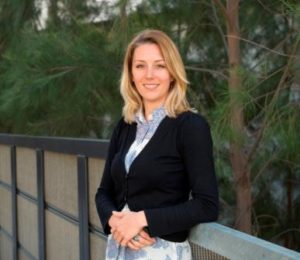
Imagine waking up every day with a leg so swollen it weighs two kilos in fluid thanks to lymphoedema.
While lymphoedema typically manifests after treatment for cancer, a lesser-known occurrence can present following severe trauma, such as a road accident or fall, where there is extensive soft tissue damage or loss.
As part of a Flinders University study, PhD candidate Malou van Zanten from the Lymphoedema Research Unit is exploring the impact of severe lower leg trauma and subsequent tissue damage on the lymphatic system, particularly injuries that require soft tissue reconstruction.
“If someone suffers severe leg trauma after a car accident their treatment is a medical emergency with fixation of the broken bones and reconstruction of the soft tissue defect with muscle, tissue or skin from another part of the body,” Ms van Zanten, based in the School of Medicine, said.
“The normal post-operative swelling of the reconstructed area usually resolves in a few weeks but for some patients, the long-term outcomes are not so good and they can end up with lymphoedema – a chronic, debilitating condition that can significantly impact their lives,” she said.
Now in the second year of her PhD, Ms van Zanten is using a novel imaging technique developed by Flinders Medical Centre’s Biomedical Engineering Research and Development Group to analyse how the lymph vessels function near the reconstructed area in real-time.
Having studied 12 patients so far from the Department of Plastic and Reconstructive Surgery at the Royal Adelaide Hospital, Ms van Zanten said the initial findings show the risk of lymphoedema most likely depends on the severity of the trauma and the type of reconstruction.
“In general most of the patients had puffy feet, and four of them have actually been diagnosed with lymphoedema, but what’s particularly interesting is that in cases where muscle was used to restore the damaged tissue, we didn’t see any lymph vessels going through that area.
“Normally you’d see a whole network of vessels going up from the foot to the lymph nodes in the knee crease, which would suggest a normal lymphatic pathway, but they seem to avoid the whole reconstructed area.
“This could be due to the lymphatic vessel’s inability to regenerate near the implanted muscle site or its inability to handle the increased load during the post-traumatic period.”
Ms van Zanten presented her preliminary research results at the 6th International Lymphoedema Framework Conference in Glasgow last month, attended also by second-year Flinders medical students Agnik Sakar and Shannon Vanderstelt, as well as Professor Neil Piller, Director of the Lymphoedema Research Unit.
Ms van Zanten said she was honoured – and shocked – to win presenter of the day out of 30 presentations: “I was so surprised because the awards were announced at the conference dinner. I was chatting away and then I heard my name being called out and realised ‘wow, that’s me’.”
She said her research highlights the need to better understand lymphatic damage after severe soft tissue trauma to improve patient outcomes.
“If we know early that someone is at risk we can reduce the burden by preserving the leg from swelling or giving them a management plan.
“Some doctors might think the person should just be happy they still have their leg but if the patient has to be reminded every day about their accident with a leg that’s three or four kilos heavier in fluid, it’s not so nice.”

